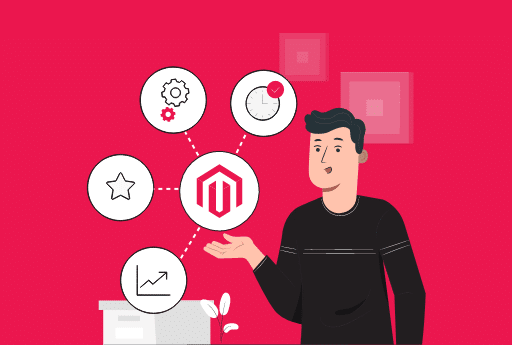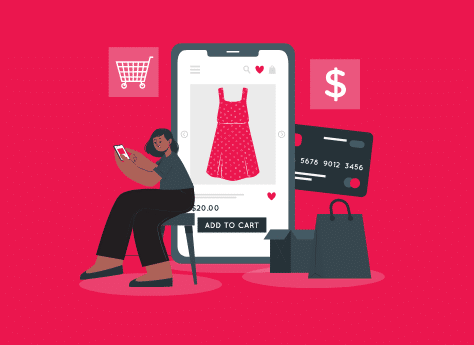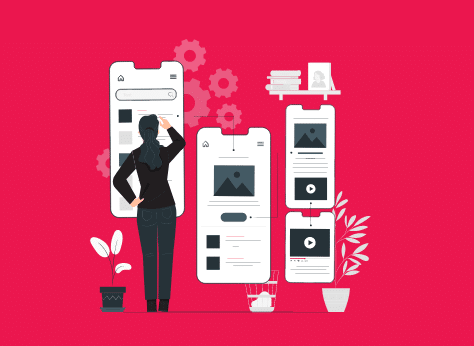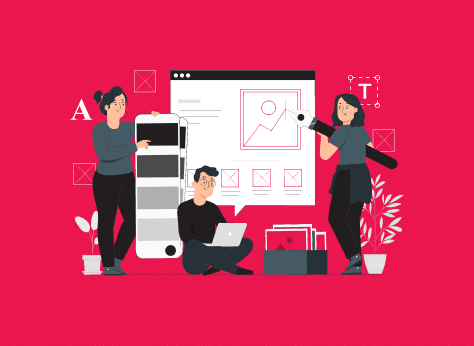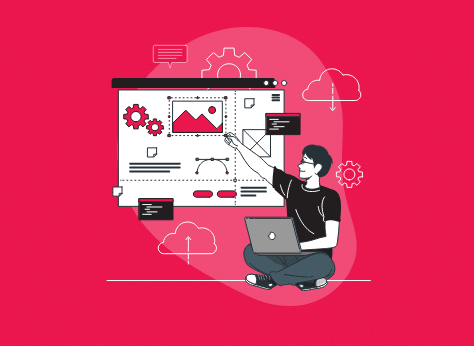Let’s start by understanding what type of e-commerce platform can be called OMNICHANNEL.
Omnichannel is an e-commerce platform that can connect multiple platforms that interact across the globe. Omnichannel is an e-commerce term that refers to a multichannel approach in sales. Omnichannel emphasizes seamless customer experiences. Clients can shop online using a smartphone, laptop or brick-and-mortar stores.
It is essential to know WHY before we move on. MAGENTO can be described as an Omnichannel E-commerce Platform. However, we must understand that Omnichannel Ecommerce is impossible without Multichannel E-commerce.
The next question that comes to mind is:
What is a MULTICHANNEL eCommerce platform?
Multichannel eCommerce is the ability to sell products to customers via multiple channels. You can communicate with your customers in many ways as a seller. This includes phone calls, social media, and even visiting their physical storefront. It is important to be present online. However, customers will know exactly where you are. Multichannel engagement is a great way to increase brand awareness. Amazing, right?
It also comprises a WONDERFUL customer experience package. Omnichannel is the answer! Omnichannel Ecommerce connects all channels, which is a considerable difference between them. Your customers will enjoy seamless shopping across all Ecommerce platforms. Now this is the DOUBLE BONANZA you would love!
We are now familiar with the basics of Omnichannel platforms. Let’s now understand why MAGENTO has been called an Omnichannel eCommerce platform. When shopping online, consumers expect flexibility. You must ensure that your in-store and online business(es) are connected to establish revenue. This will help you remain competitive in today’s highly-trending markets. Your Buyers can access your products at any given time via any channel or device. They expect you to offer them many options. Magento, an Omnichannel platform, is here to save the seller! Magento offers Omnichannel with Adobe Commerce.
Now, Why Choose Adobe?
These are just a few reasons you might be interested in these topics:
You will have a better in-store experience that increases lifetime loyalty and sales.
Your customers will be happy if they have the option to shop online or pick up their items in-store. This way, you can increase your business’ profits. Recent research found that 49% of shoppers add to their purchases when they pick up their goods. This means that a (BOPIS Buy Online, Pick Up in Store) system can be modified for pickup. This will allow merchants to expand their fulfilment options and increase customer satisfaction.
Stay Competitive With Omnichannel Business
Companies still need to adopt the Omnichannel approach and are looking into it as an urgent matter. Predictably, most retailers will adopt an Omnichannel eCommerce platform by 2021. This will allow them to enjoy a 70% increase in their profitability. The higher revenues will result in a reduction of (TCO), Total Cost Of Ownership, (IC), Inventory Costs and (OC) Operational Costs. There will also be a reduction in (PP) Promotional Pressure.
Experience And Order Management Through Omnichannel
Magento eCommerce allows you to centralize your global inventory, source intelligently for fulfilment, and merge your offline and online worlds. This will enable you to improve efficiency, reduce costs, and offer the best shopping experience. The Magento Marketplace open API allows for further customization and OMS integrations, allowing you to design the best solution for your needs.
Flexible Order Fulfillment to Grow Your Business
More fulfilment options equal more sales. You can reduce the operational costs of managing global inventory and turn your suppliers and partners into small distribution centres. Increase sales by offering online shoppers the best shopping experience. Flexibility is key to fulfilling orders. Orders can be shipped from the store, purchased online and picked up in-store.
After learning all, there is to know about Omnichannel. Let’s look at the differences between Omnichannel E-commerce and Multichannel E-commerce.
It is easy to assume that “Omnichannel” and “Multichannel” mean the same at first glance. Both have many channels that businesses can use to communicate with customers. This is obvious. However, they have distinct differences that allow them to offer different functionalities.
Let’s find out what makes them distinct and reliable in today’s market.
choose your plan
Amount of space
Bandwidth per month
E-mail accounts
MySql databases
pro
Multichannel Ecommerce
Customer (A) visits Company (A), browses the products and takes note of a particular item.
After deciding between buying the item in person or driving to the local store, the customer drives to the location.
Unfortunately, Customer (A) cannot find the item in-store. After asking a service representative for assistance, he discovered that the store needed the item in stock.
Customer (A) leaves the store empty-handed and disappointed.
pro
Omnichannel Ecommerce
Customer (B) visits the company's website and browses through the products before finding the item they are looking for.
The item/product is in stock at the local retailer/shop/store. Customer (B) adds it to their online Wishlist and then drives to the retailer.
A service representative greets Customer (B) once they have entered the store. They will have access to the customer's Wishlist and can locate the item in question.
Customer (B) then completes the purchase and drives home after a satisfying shopping experience.
These are the results of our analysis to distinguish between Omnichannel and Multichannel eCommerce.
In the first scenario, Company A gives customers multiple ways to interact with their brand. This does not add any value to the customer’s shopping experience. The customer is frustrated by the incoordination of the channels.
The second scenario is where all customer engagements become part of one centralized experience. They can, therefore, “pick up from where they left off” for the brand, regardless of channel.
The customer receives exactly what they want and when they expect it to arrive. There are no questions about miscommunications or misinformation.
Features of Omnichannel Marketing
Enhance Your User Experience:
Omnichannel is a way to improve your user experience regardless of channel. It enhances the customer experience (CX). This allows companies to concentrate on their customers and not the platform. Companies can increase their sales and retain customers by doing this.
Unity in Branding Strategy and Identity:
It is important to establish a brand tone and image that people can identify with. Focusing on the entire work experience and brand guidelines, as well as targeting the required channels, can help create a better strategy for your brand. This will increase brand loyalty and allow you to target the messaging effectively.
Increased revenue:
An Omnichannel approach increases customer engagement across multiple touchpoints. This allows for more engagements from buyers at all stages of their journey. It also helps to generate more revenue. Recent research shows that customers engaging through multiple touchpoints are 30 per cent more valuable assets and reliable.
A targeted messaging approach builds loyalty and makes it easier for customers to return to the brand again. They make up a small percentage of your total customer base. However, repeated purchases can contribute to 40% of total revenue.
Better Data Attribution:
Going Omnichannel means more than just that users have a better experience with one company. It also states that data analytics are being used to improve the user’s experience. Brands can track user engagements across multiple channels to gain a better understanding of their customer’s journeys. Brands can also track where and when their customers prefer to engage and what campaigns are most effective in delivering maximum value for their business. This data can all be combined into one strategy to optimize media and create targeted campaigns.
Components Of Omnichannel Marketing Strategy
- Data collection
- Data Analysis
- The Customer Journey Map
- Brand Guidelines
- Testing/Optimization
Use Cases Of Omnichannel Marketing
Starbucks
Starbucks’ mobile rewards app was able to offer a better mobile experience than their in-store app and puts their customer convenience first. Customers had the option to recharge/upload their credit cards via their smartphones or from their desktop computers. They were rewarded with reward points which could be used to redeem a free cup of coffee when they used the app to make their payment. The best part is that customers can order well in advance to skip the morning queues.
Walgreens
Walgreens developed a mobile app which makes it easy for customers to refill prescriptions and pick them up at the store. The application was well-designed to display their store-specific inventory, making it easy for customers to plan a trip and choose the location they want to visit.
Timberland
Timberland, however, combined the convenience and experience of an online store with that of its customers through the integration technology Near Field Communication. The Touch walls allowed them to provide additional information about their shoes.
Customers could add them to their online shopping carts or buy them in-store. Timberland also uses a product recommendation engine to help customers discover lesser-known products that are based on user preferences.
Omnichannel Strategy- What is it And Its Benefits
A business owner and their customers (customers) both benefit from an Omnichannel Strategy.
Two questions now come to mind:
- How can a company get started with their digital journey?
- How to make a strategy that is Omnichannel, distinct and effective in today’s competitive environment?
This illustration shows the seamless experience of an Omnichannel Marketing platform.
How Omnichannel Marketing Influences The Retail Market?
This is quite intriguing, isn’t it?
We want to know how Omnichannel Marketing has influenced the Retail Industry.
Omnichannel Retail was created in 2010 and introduced the Omnichannel Concept to the marketing world.
Omnichannel Retail has been a promising solution to the challenges and drawbacks posed by multiple-channel business sales.
Omnichannel Retail was founded with a consumer-centric approach and developed in the path of a centrally managed, centric data management system. Its creation has led to a revolution in the entire retail industry. Omnichannel Marketing has now become a trend and an integral part of the IoT (Internet of Things) Era.
Rise Of Omnishoppers
Every retailer will have an online store in the IoT “Internet of Things” era. It was predicted and predicted that e-commerce would soon dominate the retail market. This is because it makes it easier to buy or order online in just a few clicks.

